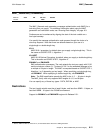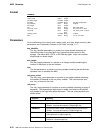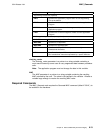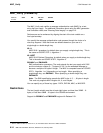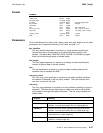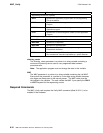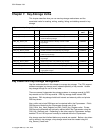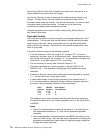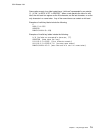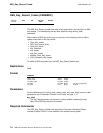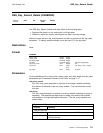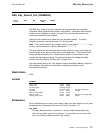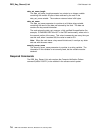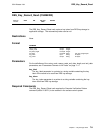CCA Release 2.54
Use the Key_Record_Delete verb to delete a key token from a key record, or to
entirely delete the key record from key storage.
Use the Key_Record_List verb to determine the existence of key records in key
storage. The Key_Record_List verb creates a key-record-list data set with
information about select key-records. The wild-card character (*) is used to obtain
information about multiple key-records. The data set can be read using
conventional workstation-data-management services.
Individual key-tokens can be read or written using the Key_Record_Read or
Key_Record_Write verbs.
Key-Label Content
Use a key label to identify a record or records in key storage managed by a CCA
implementation. The key label must be left-justified in the 64-byte string variable
used as input to the verb. Some verbs specify use of a key label while others
specify use of a key identifier. Calls that use a key identifier accept either a key
token or a key label.
A key-label character string has the following properties:
If the first character is within the range X'20' through X'FE', the input is
treated as a key label, even if it is otherwise not valid. (Inputs beginning with a
byte valued in the range X'00' through X'1F' are considered to be some form
of key token. A first byte valued to X'FF' is not valid.)
The first character of the key label cannot be numeric (0...9).
The label is terminated by a space character on the right (ASCII X'20',
EBCDIC X'40'). The remainder of the 64-byte field is padded with space
characters.
Construct a label with one to seven name-tokens, each separated by a period
(“.”). The key label must not end with a period.
A name-token consists of one to eight characters in the character set A...Z,
0...9, and three additional characters relating to different character symbols in
the various national language character sets as listed below:
The alphabetic and numeric characters and the period should be encoded in
the normal character set for the computing platform that is in use, either ASCII
or EBCDIC.
Notes:
1. Some CCA implementations accept the characters a...z and fold these to
their uppercase equivalents A...Z. Only use the uppercase alphabetic
characters.
2. Some implementations internally transform the EBCDIC encoding of a key
label to an ASCII string. Also, the label may be “tokenized” by dropping the
periods and formatting each name token into eight-byte groups, padded on
the right with space characters.
ASCII
Systems
EBCDIC
Systems
USA Graphic
(for reference)
X'23' X'7B' #
X'24' X'5B' $
X'40' X'7C' @
7-2 IBM 4758 CCA Basic Services, Release 2.54, February 2005




